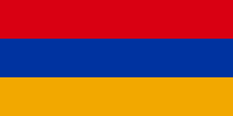
Esri provides a standard demographics dataset for Armenia sourced from data supplied by Michael Bauer Research GmbH. Visit Where to find Esri Location Data to learn more about using standard demographics.
Release date
This dataset was updated in February 2025; the vintage is 2024.
Settlement points
Esri's Armenian settlement points use the 2023 European Commission Global Human Settlement Layer (GHSL). More information about the data can be found here: https://ghslsys.jrc.ec.europa.eu. The data was verified using the latest Esri imagery.
Geography levels
| Esri geography name | Local geography name | Feature count |
|---|---|---|
Country | Hayastan | 1 |
Provinces | Marzer | 11 |
Visualize demographic data variables
The data browser is an interface to help you visualize and explore the data categories and analysis variables available in this country or region's standard demographics. See Explore data variables to learn more about this visualization tool.
Standard demographics use cases
The Esri standard demographics dataset for Armenia is updated with Michael Bauer Research GmbH data updates to this region, approximately every two years. See the Related links section below for a complete list of variables, release notes, and a sample report.
Example use cases that may help you understand Armenia's standard demographics include the following:
Total Population
 | What is measured: The total number of individuals living in a specific area. How you use it: Population counts are often used by local and national governments for policy planning, resource allocation, and to make informed decisions based on the needs of different population groups within a country or region. You can use this data to explore the allocation of public services, economic development, political representation, social research, and resources available for disaster preparedness. |
Population Density
 | What is measured: The number of people per unit of area (sq. mile or sq. kilometer). How you use it: Population Density is typically used for national and local projects such as infrastructure design, urban planning to allocate and distribute public services, and to assess the environmental impact of human activity based on where people are concentrated. |
Population per Mill
 | What is measured: The number of individuals in a region per thousand. How you use it: Population per Mill is used to understand the comparative distribution of population around a country or region based on a per-thousand ratio. This data is used to support market trend analysis, infrastructure planning, and regional and national policy development. Population distribution is often used in health care to track disease prevalence or vaccination rates. |
Male/Female Population Totals
 | What is measured: The total number of males and females in a region's population. How you use it: Male and Female Population counts provide insight into gender balance, which is used for informed decision-making in areas like education, workforce planning, health care, and skills training. This data is also used to help interpret complex results, such as health-care outcomes, crime statistics, targeted marketing campaigns, and housing shortages. |
Population Totals by Age and Gender
 | What is measured: The distribution of regional population across age groups and gender. How you use it: Male and Female Population by Age counts can be used to help predict future social and economic trends and to plan for future resource allocation based on age groups in fields such as education, health care, and the labor force. This data is important for identifying potential challenges related to shifts in age or gender ratios within different age brackets. |
Marital Status
 | What is measured: Regional population based on marital status categories. How you use it: Marital Status categories are used to understand the social structure of the population, inform policy decisions related to family dynamics, plan the needs of programs with spousal benefits, analyze trends in regional marriage rates, and improve marketing campaigns based on life stages and household composition. This data is used in government policy planning, economic analysis, social and market research, and health-care planning. |
Educational Attainment
 | What is measured: Levels of education achieved by individuals in the regional population. How you use it: Educational Attainment categories help improve understanding of the overall regional education experience. This data is typically used to assess a country's economic potential, social development, workforce capabilities, and to inform policy decisions related to workforce training and social programs. Education data can also be used to assess the effectiveness of existing public education policies and employment training programs. |
Purchasing Power
 | What is measured: The ability of individuals or households to buy goods and services in a region. Purchasing Power data consists of four metrics:
How you use it: Purchasing Power data can help improve understanding of the potential consumer market in a country or region, specifically to determine pricing strategies and market potential options. This data can be used to develop targeted product, business, and sales strategies when entering a new market or expanding within an existing one. |
Related links
Refer to the following content:
- Release notes (PDF)
- Variable list (CSV)
- Sample report (PDF)
- Demographic map layers